
Crowns serve multiple purposes, including protecting weak teeth, restoring broken or severely decayed teeth and improving the appearance of discolored teeth.
Crowns and bridges are two common fixed dental prosthetics used to restore damaged or missing teeth. Dental crowns are custom-made restorations that completely cover damaged teeth, while dental bridges are prosthetic devices that replace one or more missing teeth.
Crowns serve multiple purposes, including protecting weak teeth, restoring broken or severely decayed teeth and improving the appearance of discolored teeth. Crowns are designed to resemble natural teeth, both in appearance and function, restoring the strength, shape, size, and color of the treated tooth.
Dental bridges are prosthetic devices used to replace one or more missing teeth. They consist of artificial teeth, known as pontics, which are anchored to the adjacent natural teeth or dental implants. Dental bridges are designed to restore the appearance, functionality, and alignment of your smile while preventing the shifting of surrounding teeth and maintaining proper bite.
Benefits, types, the procedure and aftercare will be outlined. Our goal is to empower patients to make informed decisions about their dental care.
Introduction
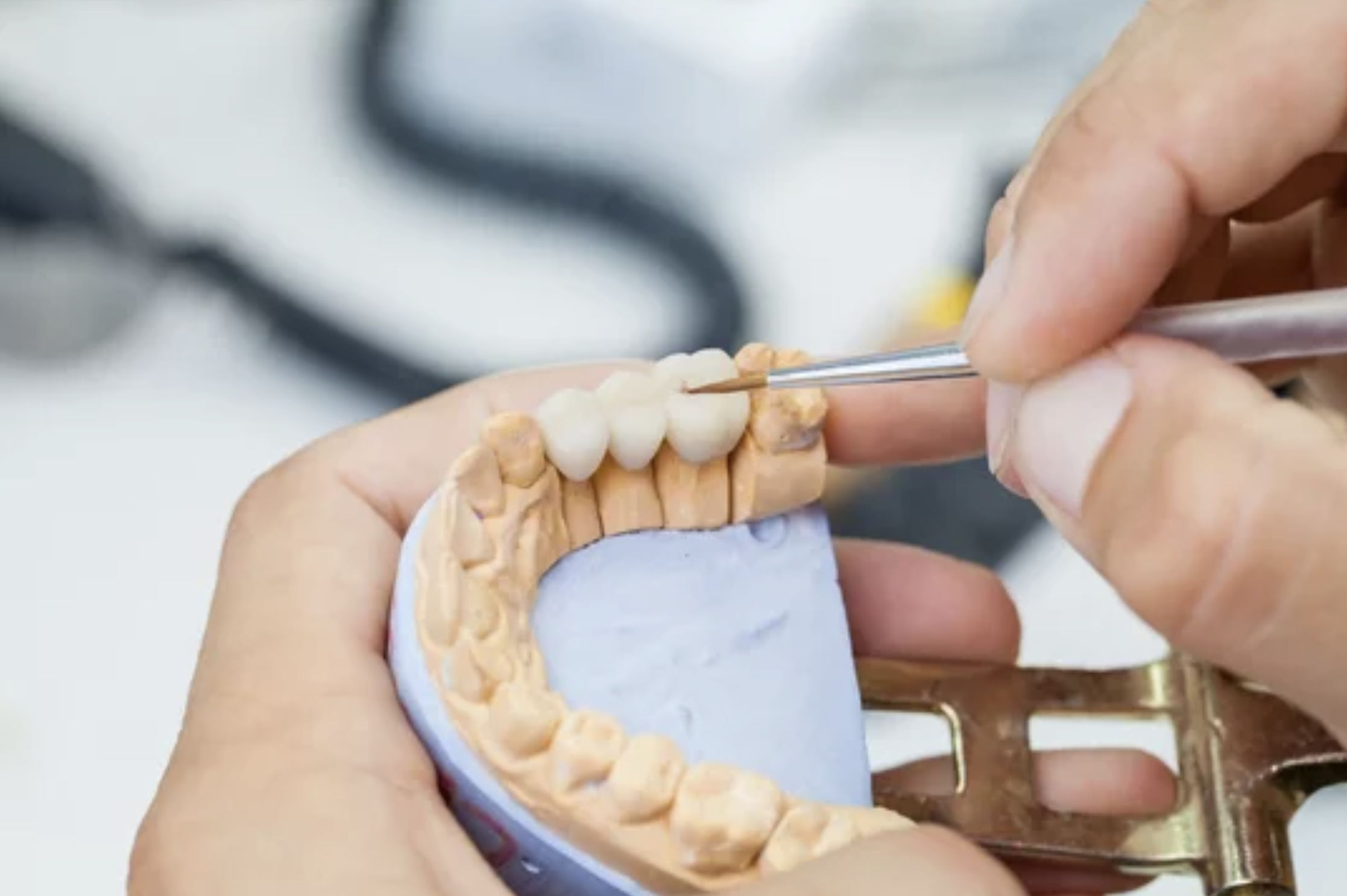

Crowning weakened teeth prevents tooth fracture under normal biting and chewing forces. By preserving natural tooth structure, crowns help avoid the need for extraction.
Benefits of Dental Crowns
Dental crowns offer various benefits, making them a versatile and widely used dental treatment.

Strengthening Teeth
Dental crowns provide structural support to weak teeth. When a tooth is severely decayed, fractured, or has a large filling, it becomes weak and vulnerable to further damage. Crowning weakened teeth prevents tooth fracture under normal biting and chewing forces. By preserving natural tooth structure, crowns help avoid the need for extraction.

Restoring Functionality
Damaged teeth can significantly impact your ability to chew food properly, leading to dietary restrictions and poor nutrition. Dental crowns restore the functionality of damaged teeth, allowing you to bite and chew effectively. With crowns, you can enjoy a wider variety of foods and maintain a balanced diet, supporting overall health and well-being.

Enhancing Aesthetics
Dental crowns not only improve the function of damaged teeth but also enhance their appearance. Crowns are custom-made to match the color, shape, and size of your natural teeth, ensuring a seamless blend with your existing dentition. They can effectively restore the appearance of misshapen, discolored, or severely stained teeth, helping you regain a confident and attractive smile.
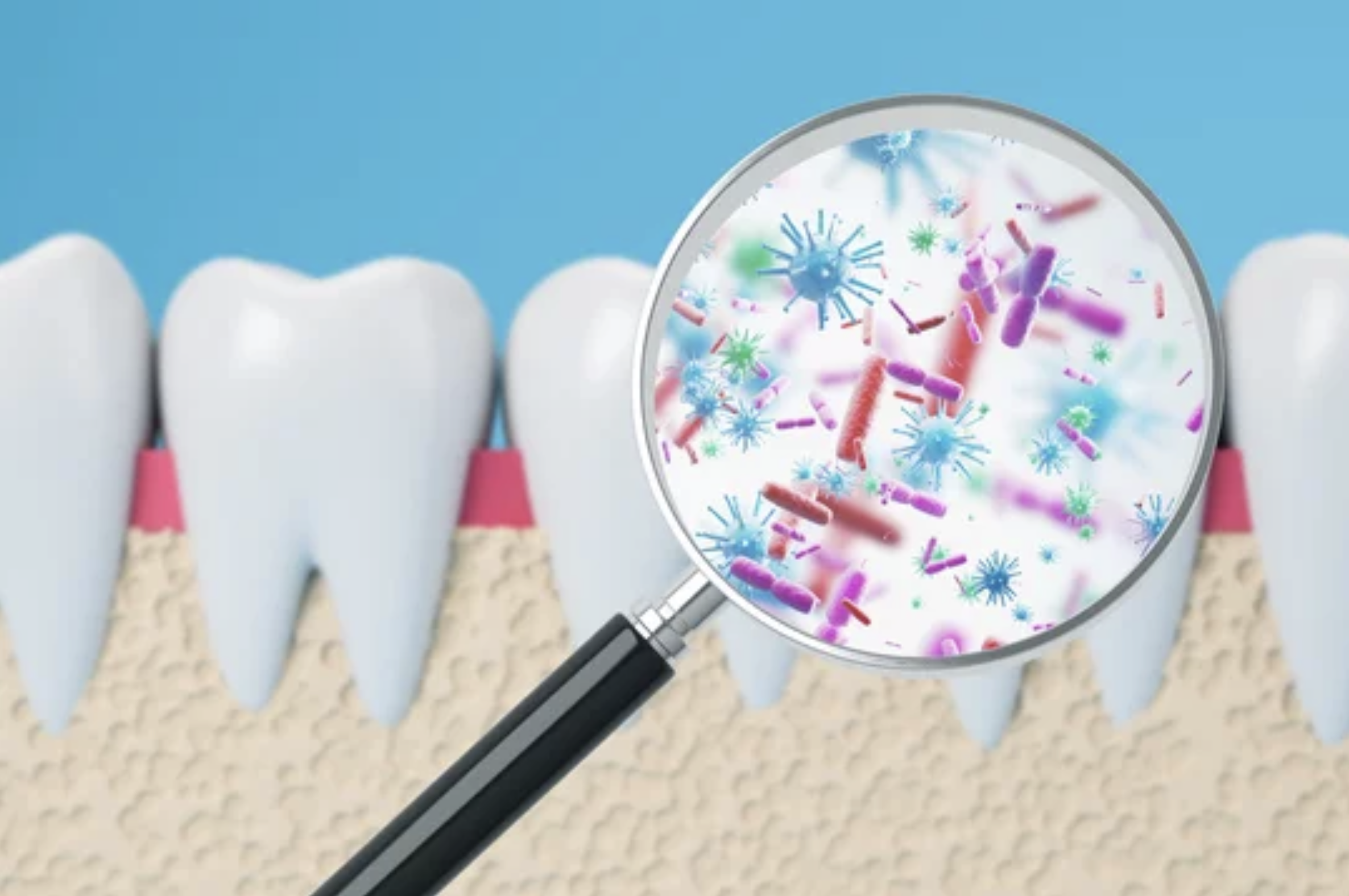
Protection and Longevity
Dental crowns act as a protective barrier for weakened teeth, that can aid in reducing the risk of fracture.

Durability
Dental crowns are designed to be durable and long-lasting with proper care. The materials used, such as metal alloys, porcelain-fused-to-metal, all-ceramic, or zirconia, offer excellent strength and resilience. With proper care and maintenance, dental crowns can be a durable and reliable solution for tooth restoration.

Improved Oral Health
Lab-fabricated dental crowns can help protect a weakened tooth against fracture. They can also help to restore proper tooth function and aesthetics. The aim is to always try to preserve our natural dentition for as long as possible.

Dental bridges help support the facial muscles, maintaining your natural facial structure and preventing a sunken appearance. By preserving the integrity of the jawbone, bridges contribute to a more youthful and vibrant appearance.

Known for their exceptional strength and aesthetics, zirconia crowns are highly durable and offer a tooth-colored appearance.
There are various types of dental crowns available, each with its unique characteristics. The choice of crown material depends on factors such as the location of the tooth, aesthetic preferences, and budget considerations.
Dental Crown Types
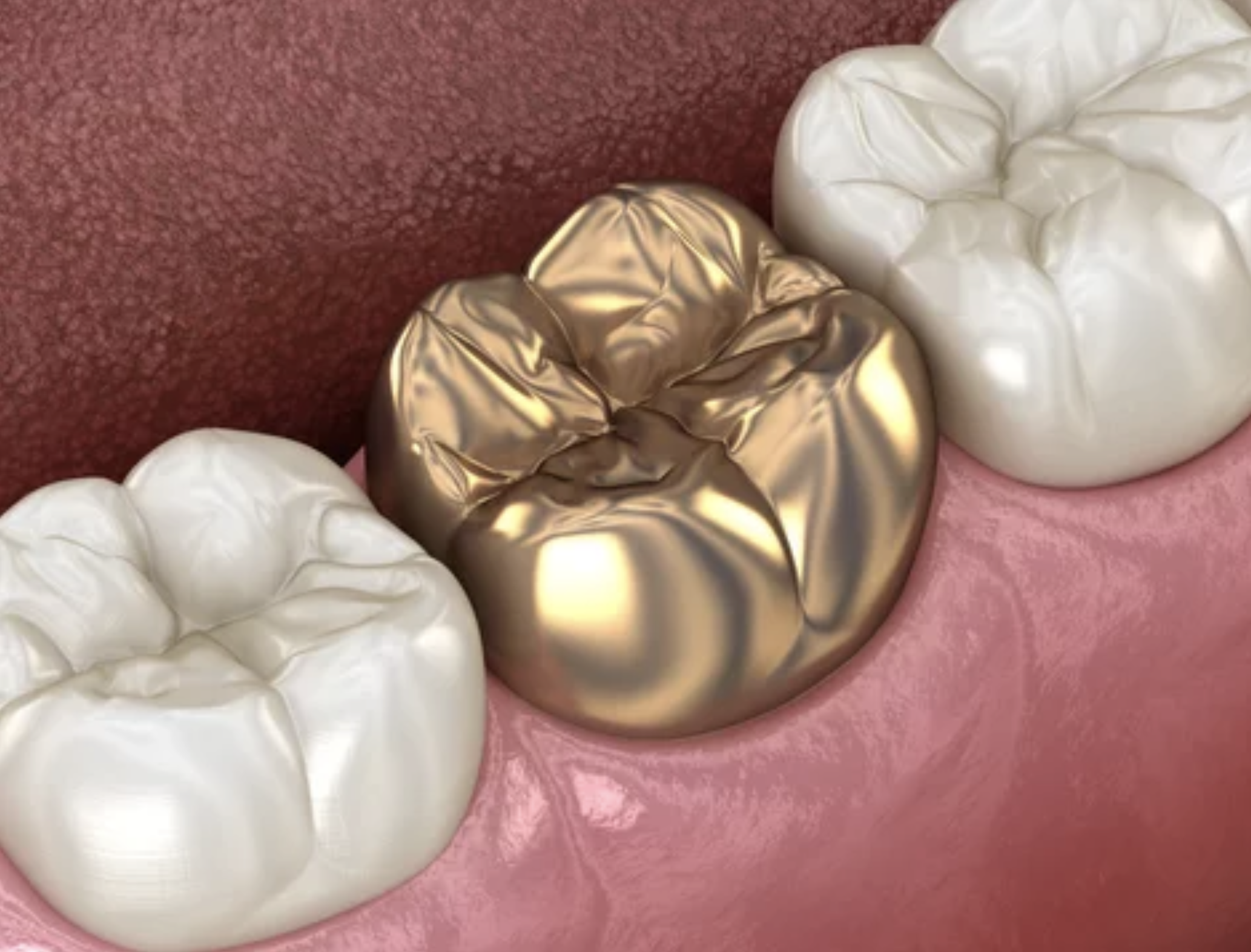
Metal Crowns
Commonly made from gold alloys, they are highly durable and ideal for back teeth due to their strength and biocompatibility. They adequately withstand biting and chewing forces. Due to gold’s hardness (gold is softer than tooth structure), metal crowns are great for patients who clench and grind their teeth as they do not wear opposing tooth structure. Due to ideal ductility and malleability characteristics, metal crowns require minimal removal of the tooth structure and are therefore considered the most conservation crown type.
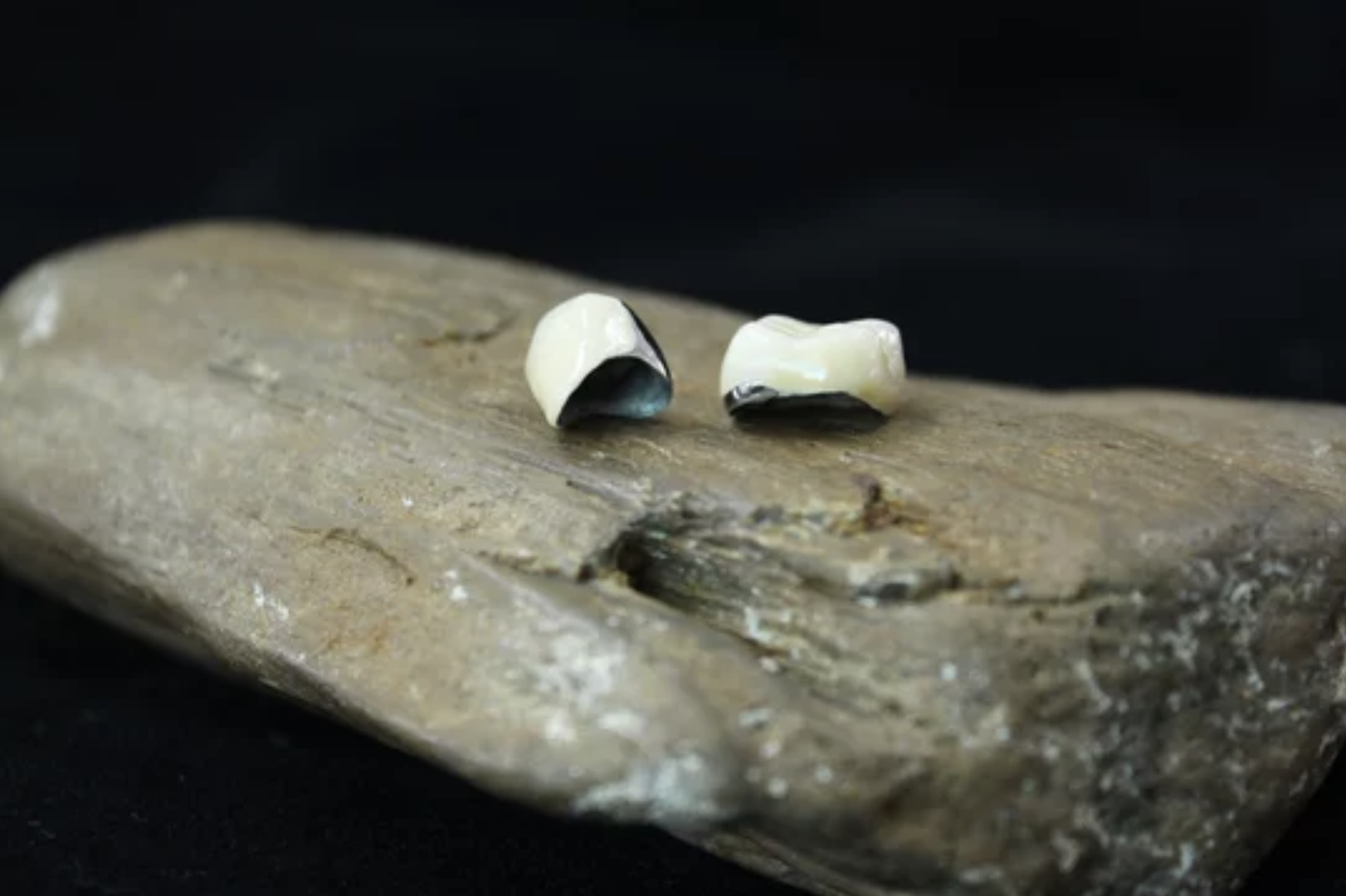
Porcelain-Fused-to-Metal (PFM) Crowns
Combining metal strength with porcelain aesthetics, PFM crowns are a popular choice, offering both durability and natural appearance. The metal structure provides strength, while the porcelain outer layer mimics the colour of natural teeth.
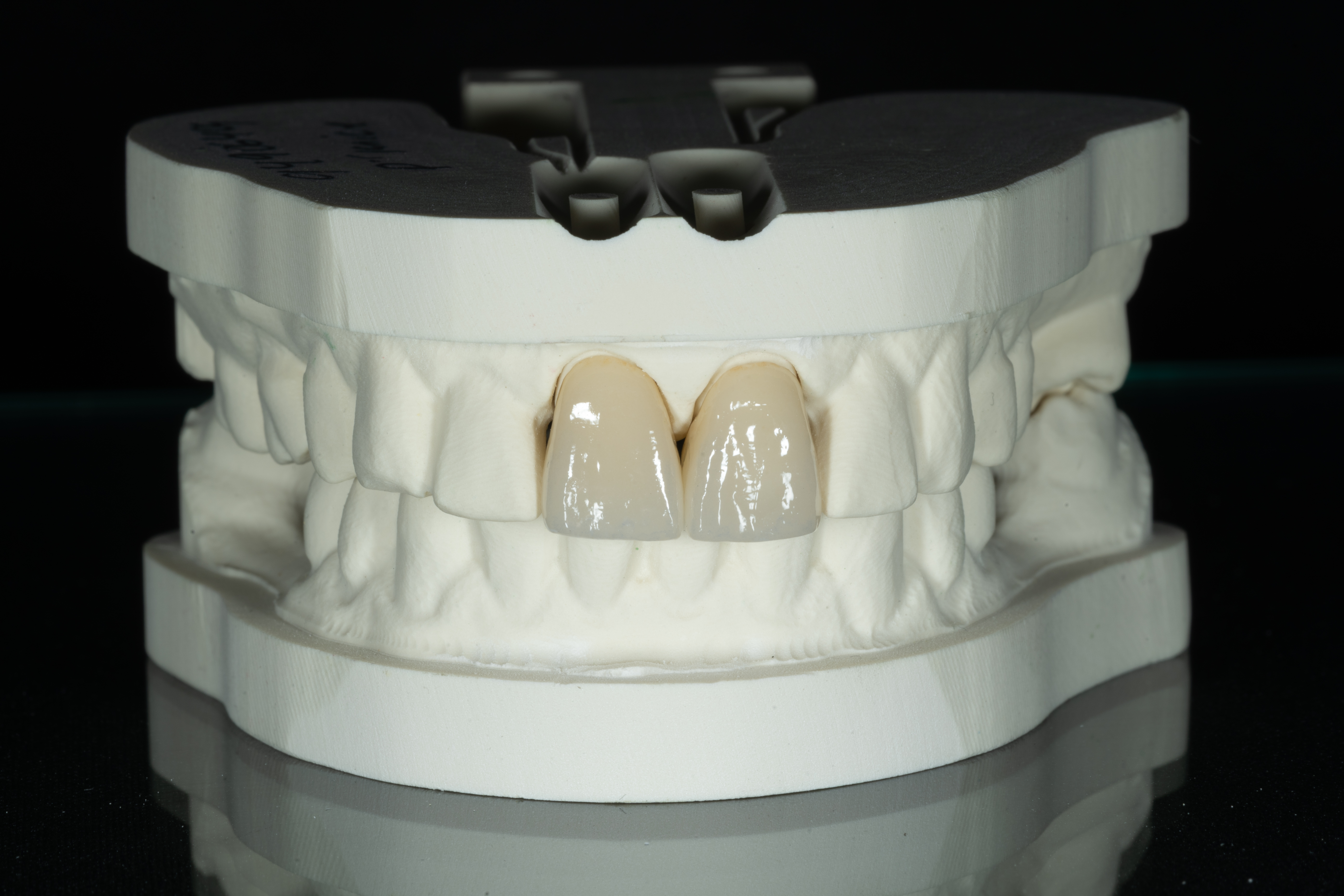
All-Ceramic Crowns
These crowns are entirely made of ceramic materials, providing excellent aesthetics and biocompatibility. They are a preferred choice for front teeth restorations as they closely resemble natural teeth in color and translucency.
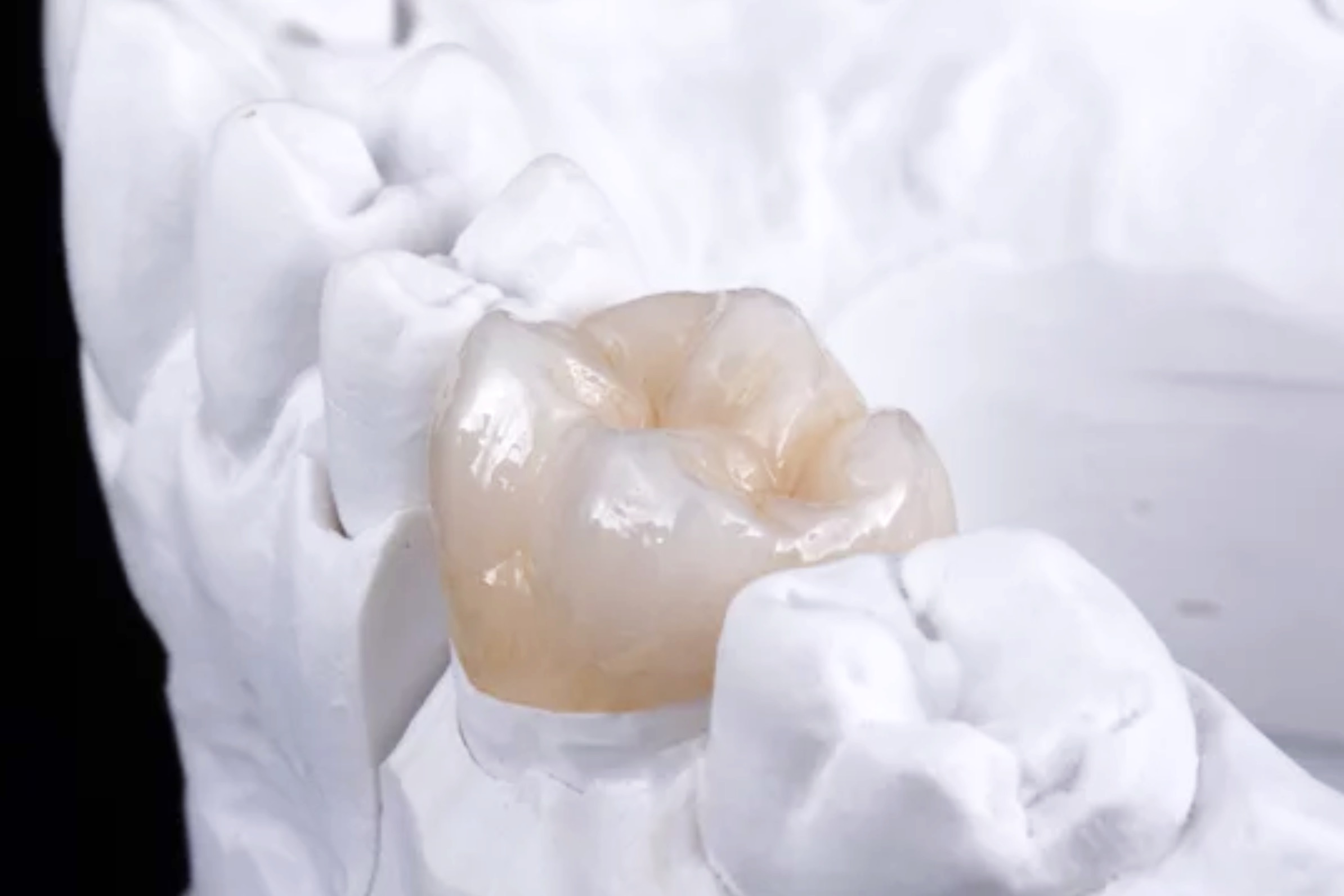
Zirconia Crowns
Known for their exceptional strength and aesthetics, zirconia crowns are highly durable and offer a tooth-coloured appearance. They are an excellent choice for both front and back teeth and are resistant to chipping and cracking.
After the natural tooth structure is prepared and the digital scan is completed and sent to the lab to fabricate the definitive crown, a temporary crown will be made. The temporary crown is commonly made from tooth-coloured composite material to be a similar shape and size to your existing natural tooth. It is important to note that the temporary crown is prone to fracture since it is not as strong as the definitive crown will be. It is also rougher in texture. The temporary crown functions to keep the space between your natural teeth by maintaining contacts with adjacent teeth and by having light biting contact with the opposing tooth. While the temporary crown is in place, eating hard or sticky foods such as nuts or toffee should be avoided to prevent fracture or dislodgement.

A traditional fixed bridge consists of two main components: the artificial tooth, known as a pontic, and the supporting dental crowns.
There are several types of dental bridges available, and the choice depends on various factors, including the location of the missing tooth, the health of adjacent teeth, and the patient's preferences. Each of these bridges can be fabricated with the materials listed above in the dental crowns section.
Dental Bridge Types
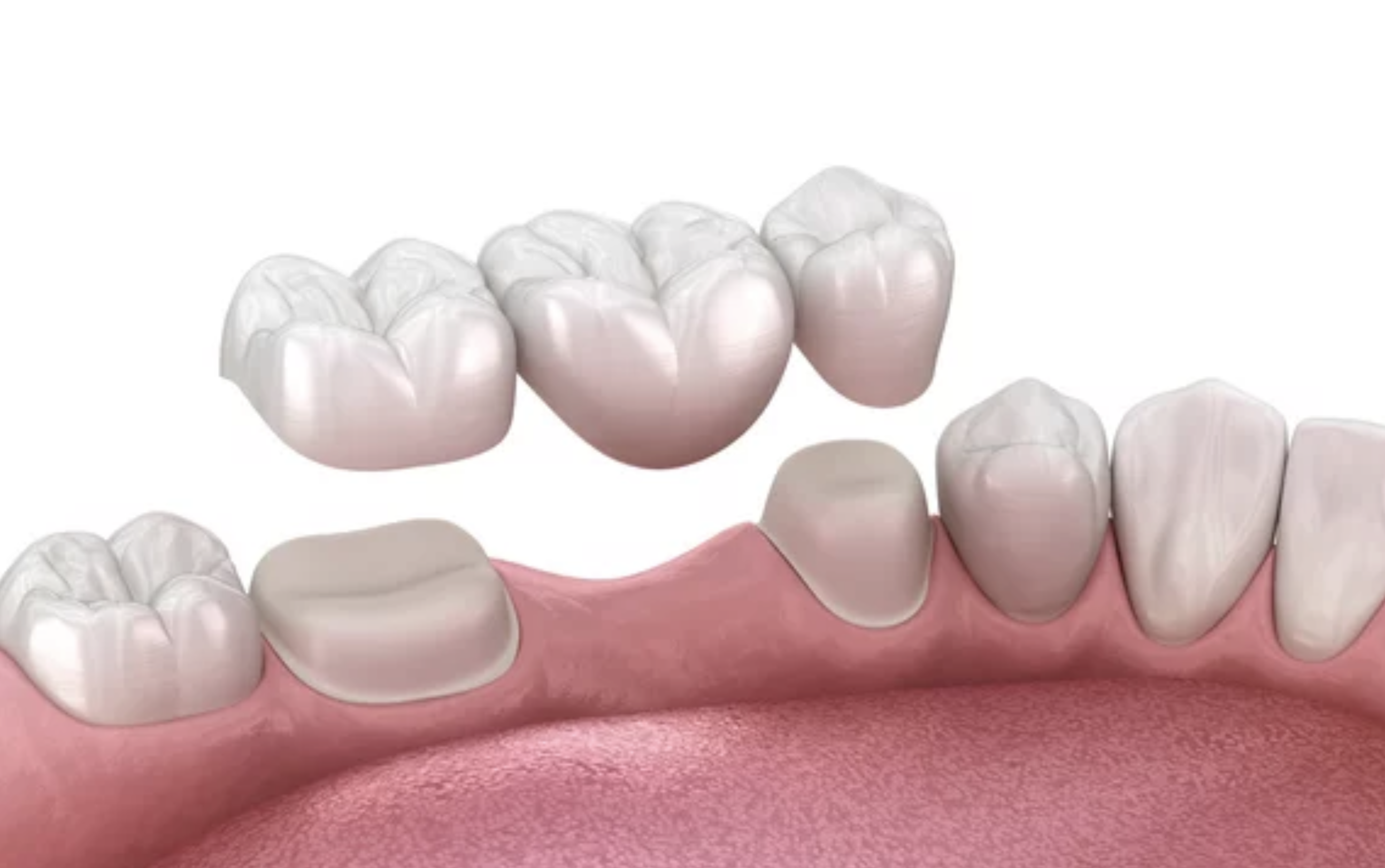
Traditional Fixed Bridge
A traditional fixed bridge consists of two main components: the artificial tooth, known as a pontic, and the supporting dental crowns. The pontic is custom-made to match the color, shape, and size of your natural tooth. The pontic fills the gap left by the missing tooth, effectively restoring the appearance of a complete smile. The supporting dental crowns are placed on the teeth adjacent to the gap and serve as abutments for the pontic.
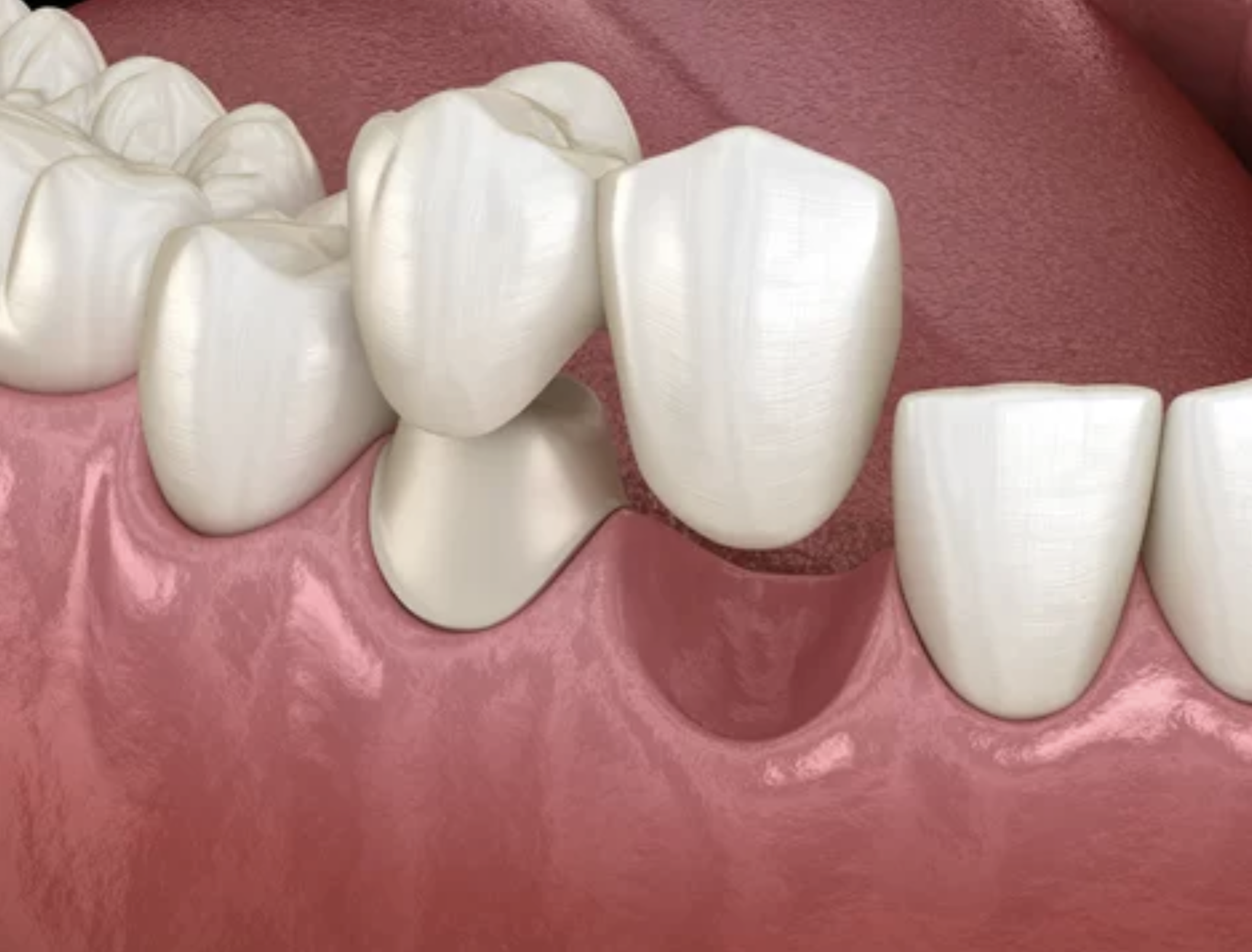
Cantilever Bridge
Cantilever bridges are used typically to replace a missing front tooth, where the forces against the missing tooth are minimal. Where possible, it is a more conservative approach. The artificial tooth is bonded to and supported by a dental crown.
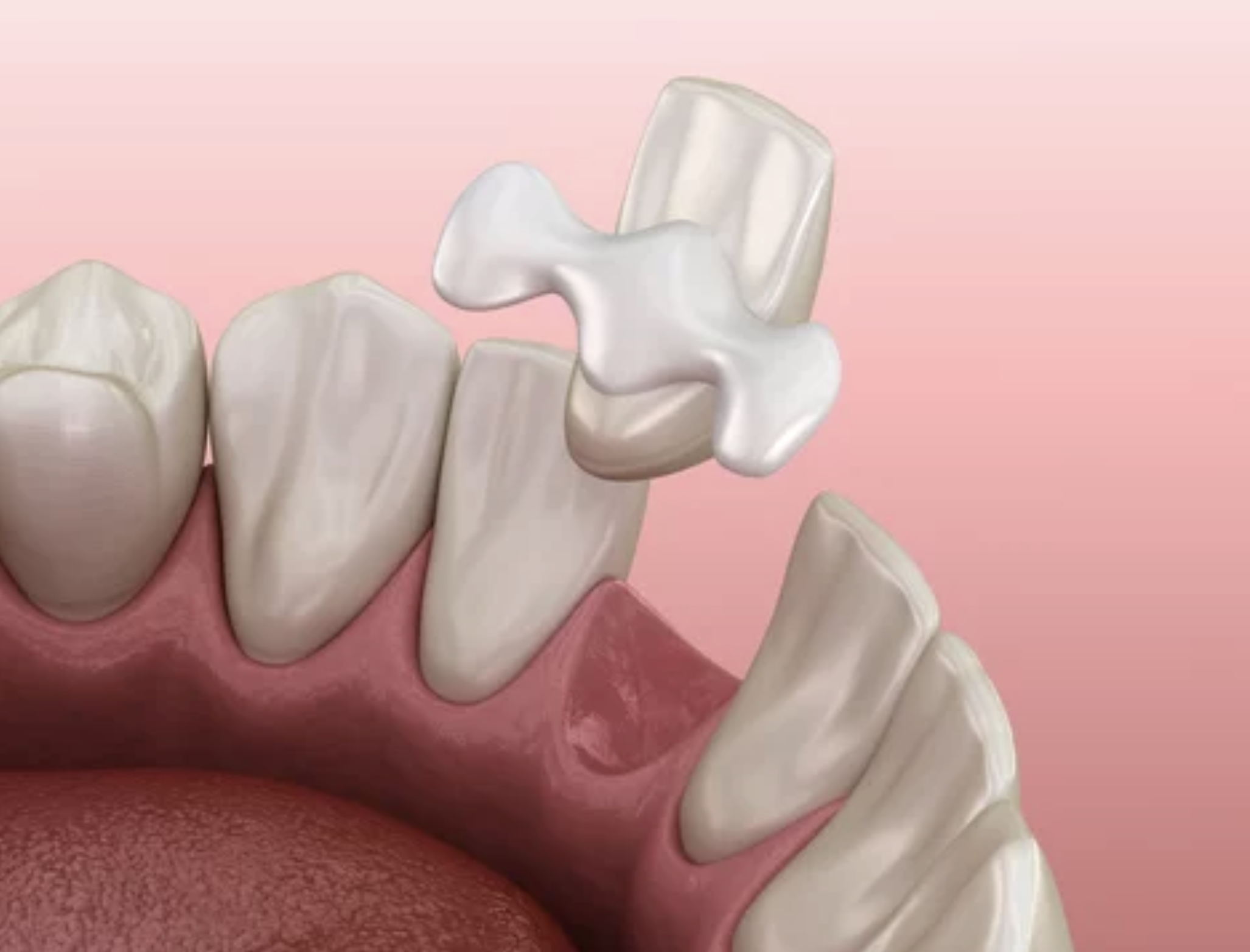
Maryland Bridge
Maryland bridges are a conservative option for replacing missing front teeth. They consist of a pontic held in place by metal or porcelain wings bonded to the backside of adjacent teeth. This type of bridge does not require the removal of substantial tooth structure.
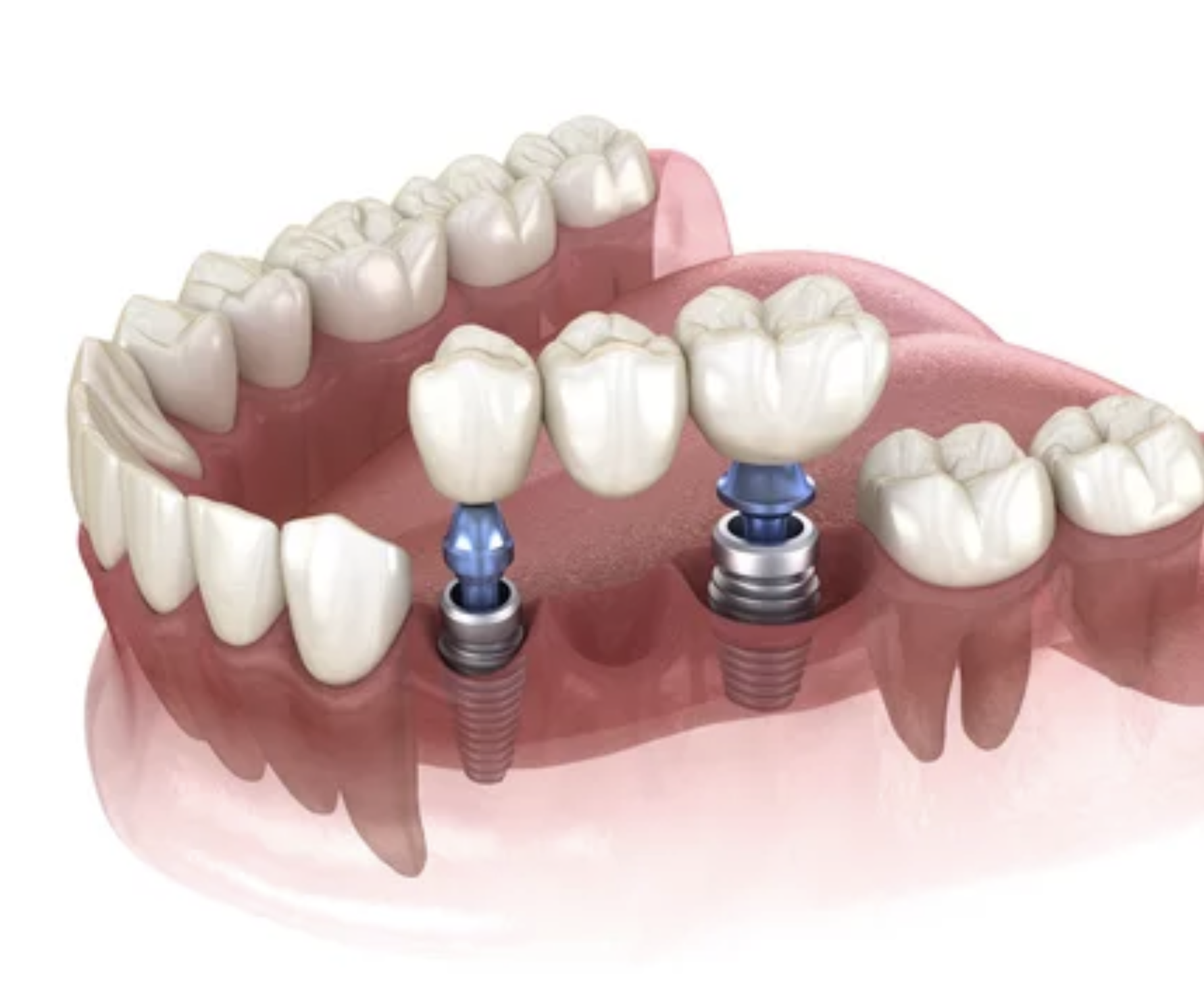
Implant-Supported Bridge
Implant-supported bridges are a popular and highly stable option for replacing multiple missing teeth. Dental implants are surgically placed in the jawbone, and the bridge is then securely attached to the implants, providing excellent support and stability.

The tooth is prepared by removing tooth structure to accommodate the crown thickness.
The dental crown and bridge procedure typically involves several steps and requires multiple visits to the dentist. The process starts with an examination to determine if a crown or bridge is appropriate treatment for you. One tooth is prepared for a crown and multiple teeth are usually prepared for a bridge (unless a cantilevered bridge is to be placed).
Crown and Bridge Procedure

Tooth Preparation
The tooth is prepared by removing tooth structure to accommodate the crown thickness. In some cases, if the tooth is severely damaged or decayed, it may require an additional build-up to provide a stable foundation for the crown.
Crown Placement
Once the permanent crown is ready, the temporary crown is removed, and the fit, color, and shape are checked. If satisfactory, the crown is securely bonded using dental cement and the bite is adjusted for comfort and function.
Temporary Crown
While your permanent crown is being fabricated, a temporary crown is placed to protect the prepared tooth and to provide temporary function and aesthetics. The temporary crown is usually made from a composite resin material.
Digital Scan
The prepared tooth is digitally scanned to create a precise digital model. This model serves as a blueprint for the dental laboratory to fabricate a custom crown that matches the size, shape, and color of your natural teeth.





If you have a habit of grinding or clenching your teeth, discuss this with your dentist who may recommend a custom-fitted nightguard to protect your crowns and natural teeth.
Aftercare
By following these care instructions and maintaining good oral hygiene practices, your dental crown or bridge can last for many years, providing functionality, aesthetics, and protection to your treated tooth.

Brushing and Flossing
Brush your teeth at least twice a day with a soft-bristled toothbrush and fluoride toothpaste. Pay special attention to the gum line where the crown meets the tooth to remove plaque and bacteria. Floss daily or use interdental brushes to clean the spaces between your teeth and just beneath the gum line to ensure thorough plaque removal.

Be Mindful of Foods and Drinks
Certain foods and beverages can stain or damage dental crowns. Limit your consumption of highly pigmented foods and drinks such as coffee, tea, red wine, and dark-colored berries. If you do consume these items, rinse your mouth with water afterward to minimize staining. Be cautious of sticky or hard foods that can potentially dislodge or damage the crown. Cutting or biting into these types of foods with your back teeth may put excessive pressure on the crown, so use caution when eating them.

Avoid Excessive Force or Abrasive Actions
While dental crowns are designed to withstand normal biting and chewing forces, they may still be vulnerable to excessive force or abrasive actions. Avoid biting on hard objects such as ice, pens, or fingernails, as this can lead to crown fractures or damage. If you have a habit of grinding or clenching your teeth, known as bruxism, discuss this with your dentist who may recommend a custom-fitted nightguard to protect your crowns and natural teeth.

Regular Dental Check-ups
Regular dental check-ups are essential for maintaining the health of your dental crown. We will examine the condition of your crown, assess the fit and integrity, and check for any signs of decay or gum disease around the margins. Professional cleanings performed by your dental hygienist will help remove any plaque or tartar buildup that cannot be effectively removed at home. These routine visits allow us to address any issues early on and provide the necessary care to keep your crown in optimal condition.

Report any Changes or Discomfort
If you notice any changes in the fit, color, or sensitivity of your dental crown, it is important to contact us promptly. These changes could indicate underlying issues that require attention, such as a loose crown, a damaged seal, or infection. Early detection and prompt treatment can prevent further complications.

Mouthguards
If you engage in activities that may involve the risk of dental trauma, such as contact sports, wear a mouthguard to protect your teeth and crowns from injury. Speak to your dentist about having a custom one fabricated for you.
Summary
Dental crowns and bridges are effective restorative treatments that offer numerous benefits in terms of both aesthetics and oral health. Whether you require a crown to protect a damaged tooth or a bridge to replace a missing tooth, understanding the procedure, types, and care guidelines is essential to make informed decisions about your dental care. By working closely with your dentist, you can achieve a healthier, more beautiful smile and enjoy the functional benefits that dental crowns and bridges provide. Remember to maintain regular dental visits and follow proper oral hygiene practices to ensure the long-term success of all your dental restorations.
Benefits of Dental Bridges
Dental bridges offer numerous benefits.

Restoring Smile and Confidence
Dental bridges fill the gaps caused by missing teeth, enhancing the aesthetics of your smile and boosting your self-confidence. The artificial teeth, known as pontics, are custom-made to match the color, shape, and size of your natural teeth, ensuring a seamless and natural-looking smile.

Improving Chewing and Speaking Abilities
By replacing missing teeth, bridges restore the ability to chew and speak properly, allowing you to enjoy a wide variety of foods and communicate clearly. The pontics are designed to function like natural teeth, providing the necessary biting and chewing surfaces.

Maintaining Facial Structure
Missing teeth can lead to facial sagging and premature aging. When teeth are lost, the jawbone may start to deteriorate, causing a loss of support for the facial muscles. This can result in a sunken appearance, wrinkles around the mouth, and a more aged look. Dental bridges help support the facial muscles, maintaining your natural facial structure and preventing a sunken appearance. By preserving the integrity of the jawbone, bridges contribute to a more youthful and vibrant appearance.

Distributing Bite Forces
Dental bridges distribute bite forces evenly across multiple supporting teeth, preventing excessive stress on individual teeth and reducing the risk of damage or fractures. When a tooth is missing, the remaining teeth may have to bear a greater burden when biting and chewing. This can lead to overloading of certain teeth, increasing the likelihood of cracks, fractures, or wear. By evenly distributing the forces during chewing, bridges help protect the remaining teeth and promote their long-term health.
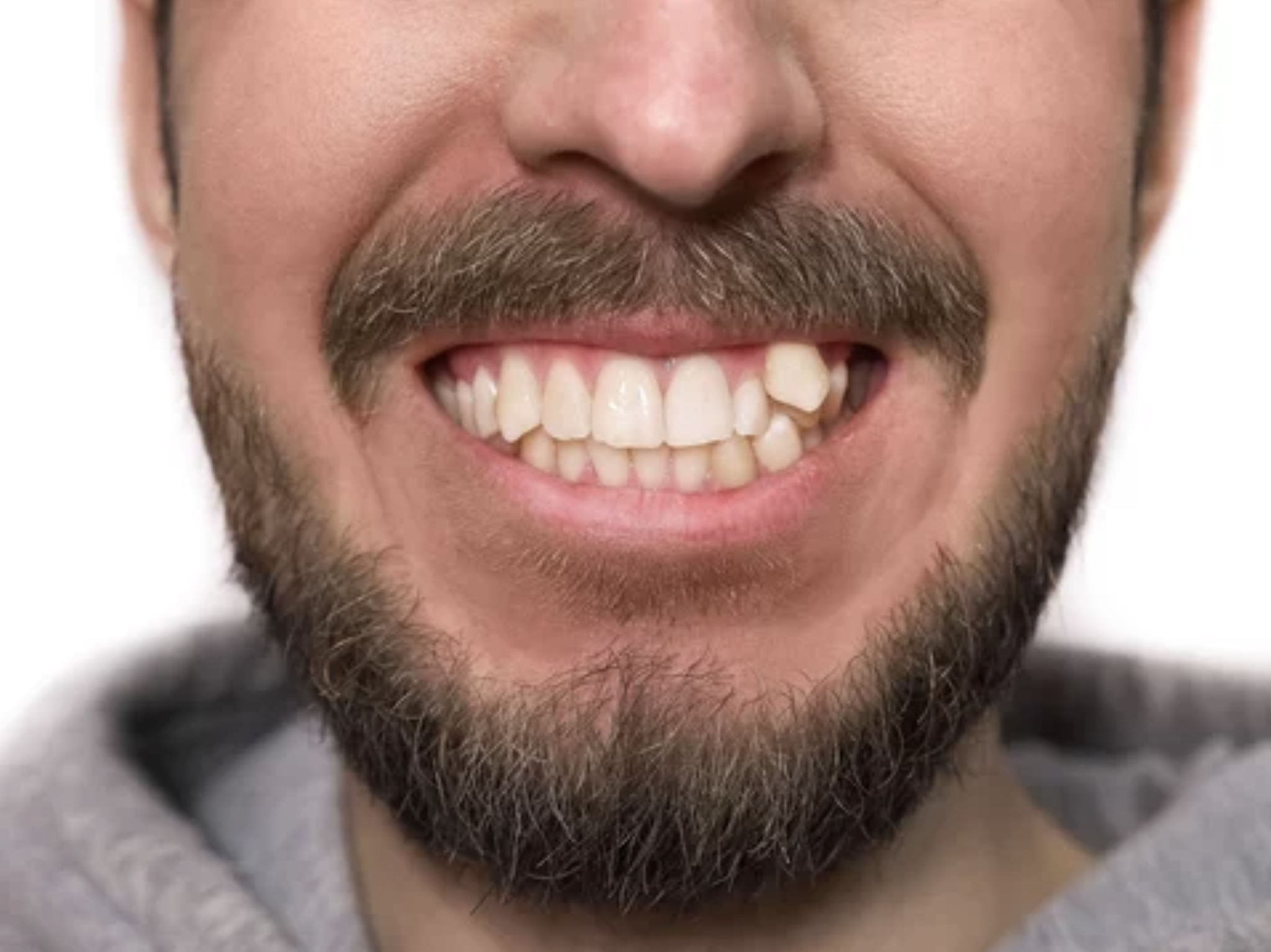
Preventing Tooth Shifting
When a tooth is missing, adjacent teeth can shift into the gap, causing misalignment and bite problems. This can lead to issues with occlusion (how the upper and lower teeth fit together), jaw pain, and difficulties in oral hygiene maintenance. Bridges fill the space created by missing teeth, preventing the shifting of surrounding teeth and maintaining proper dental arch alignment. By preserving the alignment of your teeth, bridges contribute to a healthy bite and promote overall oral health.













